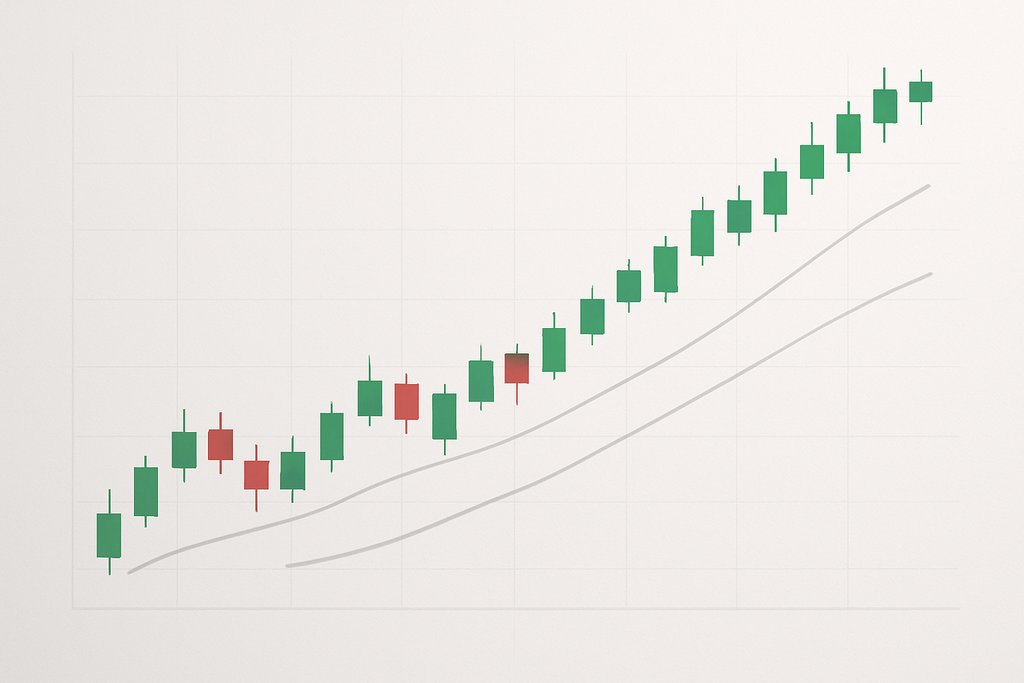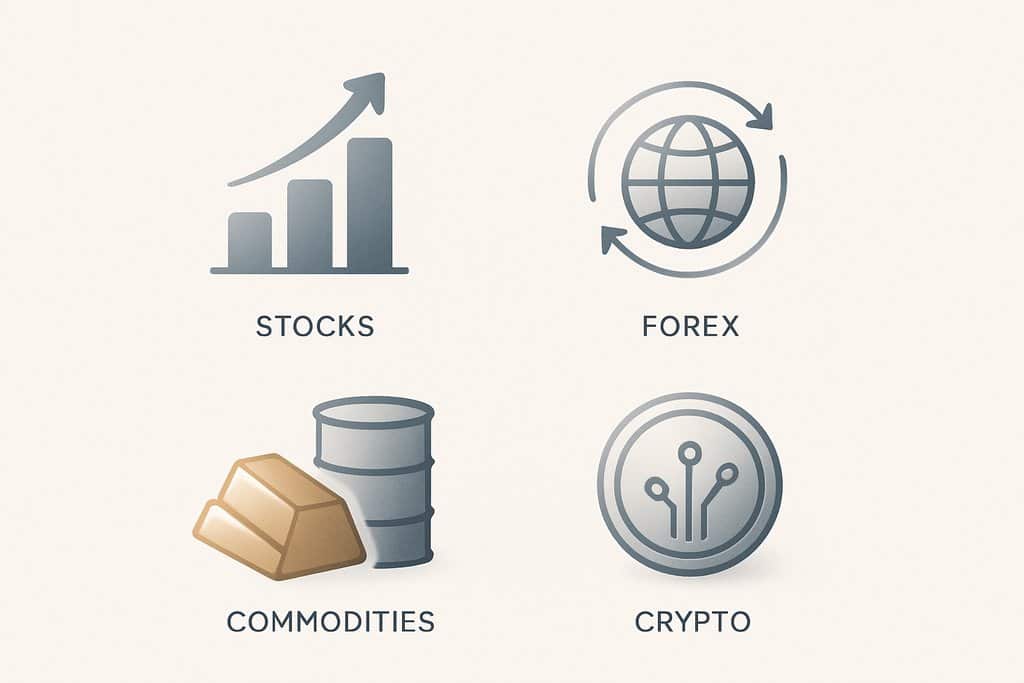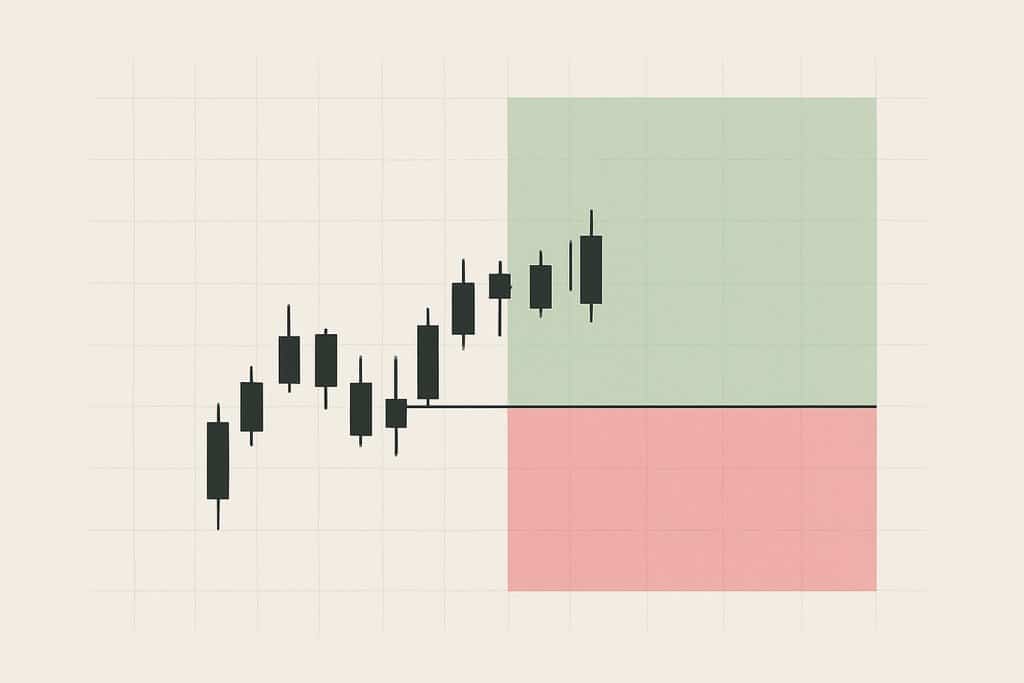Trading in 2025: Strategies, Tools & Day Trading Guide
A practical, modern guide to trading across styles, with step-by-step examples, risk controls, and automation that turns plain-language rules into live orders.

Markets feel fast, data is everywhere, and the gap between an idea and a live order can still be wide. This guide shows how to choose a style, build rules you can execute, and use modern tools like Obside to turn plain-language instructions into alerts, backtests, and automated actions with your broker.
Table of contents
- What is trading?
- Main types of trading, including Day trading
- How markets work
- Technical and fundamental analysis
- Risk management and psychology
- Building a trading plan
- From idea to execution with Obside
- Practical examples
- Benefits, trade-offs, and pitfalls
- 14-day action plan
- Advanced topics
- Related articles
- FAQ
What you will learn
- How Day trading, swing, and position styles differ
- Core market mechanics and order types
- Blending technicals, fundamentals, and news
- Risk sizing, expectancy, and drawdown control
- Turning rules into automated actions with Obside
What is trading?
Trading is buying and selling financial instruments to capture price moves across minutes to months. Unlike long-term investing that favors compounding and fundamentals, trading focuses on repeatable rules for entries, exits, and risk sizing across stocks, forex, futures, commodities, and crypto.
Think of trading as a decision engine. You frame a hypothesis about price behavior, define conditions, manage risk, and evaluate results. Today that engine can include algorithmic logic, real-time news triggers, and automated workflows that compress the time from idea to execution.
If you are new, write a simple plan around one market, one timeframe, and one setup. Simplicity improves consistency, which builds skill.
The main types of trading, including Day trading
Styles map to personalities, schedules, and risk tolerance. Knowing the differences helps you choose a path that fits your attention span and goals.
Day trading
Day traders open and close positions within the same session to capture intraday volatility without overnight risk. Liquidity, execution speed, fees, and tools such as VWAP, RSI, MACD, and volume readouts are central. Common intraday charts span 1 to 15 minutes, with higher timeframes for context.
For background, see Investopedia on day traders and Wikipedia on market microstructure.
Scalping
Scalping targets very small moves many times per session. It requires tight spreads, low fees, and strict control of latency and stress. This style suits experienced traders comfortable with rapid decision cycles.
Swing trading
Swing trades last days to weeks and aim to capture directional moves around earnings, macro data, or technical breakouts. Traders often use daily and 4 hour charts. This style reduces screen time versus Day trading.
Position trading
Position traders hold for weeks to months, leaning more on fundamentals and macro trends such as policy changes or sector themes. If you focus on equities, exploring sectors like investing in AI stocks can connect long-term narratives with technical timing.
Algorithmic and rules-based trading
Algorithmic trading converts rules into code or no-code logic that runs with discipline. It ranges from moving average crossovers to multi-factor models with risk parity, volatility targets, or news-driven triggers. The advantage is consistency. The challenge is robust design and validation. Learn core techniques at Investopedia or Wikipedia on technical analysis.
How markets work: instruments, orders, and price behavior
Before placing a trade, understand what you are trading, how orders interact with market structure, and what drives price changes.
Instruments and venues
Stocks and ETFs trade on exchanges like NYSE and NASDAQ. Forex trades over the counter 24 hours per business day. Futures and options offer leverage and structured payoffs. Crypto trades on continuous exchanges with varied liquidity. Venue rules, tick sizes, and fees shape execution quality and cost.
Order types and execution
Market orders fill at the best available price. Limit orders specify the price you will accept and control slippage. Stop orders trigger into market or limit orders when a level is reached. Spreads, book depth, volatility, and news shocks influence fills. Learn order types at Investopedia.
Price drivers
Prices move on order flow imbalances. Technical dynamics like trend and mean reversion combine with fundamentals such as earnings, rates, inflation, and geopolitics. Aligning both lenses can improve durability. For mechanics, see market microstructure.
Technical and fundamental analysis for trading
Analysis transforms raw data into decisions. Most traders blend technicals, fundamentals, and news to build a complete picture.
Technical analysis
Technicals study price and volume. Popular tools include moving averages for trend, RSI for momentum, MACD for crossovers and divergence, ATR for volatility sizing, and support or resistance from prior swings. See RSI, MACD, and moving averages for deeper reading.
Fundamental and macro analysis
Fundamentals assess value and catalysts. For equities, watch growth, margins, cash flow, and guidance. For forex, track rates, inflation, and central bank policy. For commodities, supply and demand dominate. You can also explore thematic ideas like choosing the best stocks to buy now while applying technical timing.
News and alternative data
Breaking headlines, company announcements, social signals, and alternative datasets can be turned into alerts and actions. For example, a product surprise could trigger a breakout entry with a stop under the prior day low if rules confirm.
Risk management and trading psychology
Profitability rests on risk control and discipline. Without sizing and structure, even good setups fail.
Position sizing and stops
Risk a fixed percent per trade, such as 0.5 to 1 percent. Place stops beyond structural levels or use a volatility buffer via ATR so distance adapts to regime. Position size so the dollar risk stays within your limit.
Risk to reward and expectancy
Favor setups where potential reward exceeds risk. Expectancy equals win rate times average win minus loss rate times average loss. Positive expectancy with controlled variance is what matters.

Drawdowns and mental resilience
Drawdowns test patience. Keep a journal, follow checklists, and de-risk when confidence is low. See primers on expectancy and risk management.
Building a trading plan that scales
A plan converts intention into a blueprint that evolves with data. Start simple, then iterate with evidence.
Define your market and timeframe
Pick one or two instruments and a timeframe that fits your schedule. For Day trading, a 5 minute entry with 1 hour context is common. For swing trading, daily signals with 4 hour alignment work well.
Specify entry and exit rules
Write conditions precisely. Example: long when the 20 EMA is above the 50 EMA, price pulls back to the 20 EMA, RSI is below 70, and a breakout occurs on above-average volume. Exit if the 20 crosses below the 50 or price closes below the prior swing low.
Set risk parameters
Define max risk per trade, daily loss caps, and weekly pause rules. Plan for partial profits and trailing stops.
Validate with backtesting
Test on historical data to estimate win rate, drawdown, and expectancy. Avoid overfitting by favoring robust rules that generalize.
Automate for consistency
Automation reduces decision fatigue and turns your edge into consistent execution. This is where a platform like Obside helps.
From idea to execution with Obside
Obside is a financial automation platform that converts plain-language instructions into alerts, orders, and portfolio strategies in seconds. You describe what you want to do in a chat with Obside Copilot, then validate with ultra-fast backtests and run it live by connecting brokers and exchanges.

With Obside you can define smart alerts across price, indicators, news, or macro data, trigger automatic orders when conditions fire, and manage full strategies with entries, exits, and risk controls. Obside won the Innovation Prize 2024 at the Paris Trading Expo and is supported by Microsoft for Startups.
Practical trading examples and step-by-step guidance
Use these templates as starting points and adapt them to your markets and schedule.
Example 1: A structured Day trading setup on EUR/USD
-
Market and timeframe
Trade EUR/USD for liquidity. Use a 5 minute chart for entries with 1 hour bias.
-
Directional bias
On 1 hour, bias is bullish if price is above the 50 EMA and RSI is 50 to 65. Bias is bearish if price is below the 50 EMA and RSI is 35 to 50.
-
Entry trigger
On 5 minute, wait for a pullback to the 20 EMA with RSI above 45 in a bullish bias. Enter on a close above the prior minor swing high with volume above the 20-bar average.
-
Stop and targets
Place the stop a few pips below the pullback low or use 1.2 times the 14-period ATR. Take partial at 2R and trail with the 20 EMA or swing structure for 3R.
-
Risk policy
Risk 0.5 percent per trade, cap daily loss at 1.5 percent, and pause after reaching the cap. Avoid high-impact news unless pretested.
-
Review
Journal screenshots and notes. After 20 to 30 trades, refine entries and targets based on evidence.
You can ask Obside Copilot to alert when bias aligns, then auto-place orders with predefined stops and targets when the 5 minute trigger confirms.
Example 2: Swing breakout with a volatility filter
-
Market and timeframe
Select a liquid stock or crypto pair. Use daily signals and 4 hour refinement.
-
Setup
Find 15-session consolidations. Add 20-day ATR. Consider the breakout valid if the close exceeds range high by at least 0.5 ATR and volume beats the 30-day average.
-
Entry and exit
Enter next open or on a pullback that holds the breakout level. Stop 1 ATR below that level. Target 3R or trail with a 10-day low stop.
-
Risk and portfolio
Risk 0.5 to 1 percent per trade. Limit correlated exposure and rotate into relative strength.
Backtest the rules with Obside, then automate alerts and orders so valid breakouts are executed even when you are away.
Example 3: News-driven strategy with automatic orders
-
Signal definition
Monitor product announcements, macro releases like CPI, or sector news. For instance, buy oil on a credible hurricane impact signal paired with volatility expansion.
-
Automation workflow
In Obside, describe rules such as: sell my semiconductor ETF if new tariffs on chips are announced and it drops more than 2 percent intraday, then raise cash by 10 percent. Or buy 1000 dollars of Bitcoin if price is below 100,000 and daily volume rises 50 percent.
-
Risk and overrides
Set max allocation per strategy, a global daily loss limit, and a manual pause toggle for exceptional conditions.
Benefits, trade-offs, and what to watch out for
Trading offers flexibility, clear rules, and the potential to compound small edges. Day trading provides frequent feedback and no overnight risk. Swing and position strategies demand less screen time. Algorithmic approaches add discipline and scalability.
Trade-offs include higher fees with frequent trading, data overload, and overfitting in backtests. News-driven approaches can whipsaw without crisp rules. Mitigate risk with simple definitions, clear risk caps, scheduled reviews, and automation that executes exactly as designed.
- Write rules you can summarize in one paragraph
- Cap daily losses to protect monthly results
- Prune indicators that add no measurable value
- Automate execution to reduce hesitation
- Keep learning from reliable sources and your journal
Getting started: an actionable path for the next 14 days
A two-week sprint can move you from concept to execution.
Days 1 to 2: Choose style and market
Decide between Day trading and swing trading. Select one liquid instrument. Write a one-page plan with entries, exits, and risk rules.
Days 3 to 5: Backtest version 1
Run a quick backtest and review win rate, average win to loss, drawdown, and sample size. Make small, evidence-based tweaks.
Days 6 to 8: Paper trade the full process
Simulate orders in real time. Capture screenshots, track emotions, and verify stop and target adherence.
Days 9 to 10: Automate alerts
Use Obside to convert conditions into alerts and automatic actions. Add session guards and loss limits for Day trading. Schedule daily scans and next-day orders for swing strategies.
Days 11 to 13: Controlled live test
Risk a small amount per trade, such as 0.25 percent. Prioritize process over P and L. If rules break under pressure, adjust automation and checklists.
Day 14: Review and scale
If expectancy is positive and adherence is high, scale position size toward your target risk per trade. Reassess weekly.
Advanced topics for traders who want to level up
Once your base process is stable, add selective complexity.
- Multi-timeframe confluence: align entries with higher timeframe bias.
- Volatility adaptation: size positions with ATR across regimes.
- Regime detection: identify trending versus ranging periods.
- Diversified strategy portfolio: run uncorrelated edges across assets and timeframes.
- Continuous integration for strategies: version, test, and deploy improvements quickly.
See Algorithmic trading and a primer on ATR as you refine tooling.
Related articles
- AI Stocks: How to invest and benefit from the AI boom
- Best stocks to buy now: a practical investor guide
Conclusion: Turn your trading ideas into consistent action
Success comes from clear rules, steady risk control, and execution without hesitation. Day trading needs speed and discipline. Swing and position trading require patience and strong filters. Write your rules in plain language, validate with a quick backtest, and automate execution. Obside lets you do all three so ideas move to market in seconds.
This article is not financial advice. Trading involves risk, including the loss of principal. Always do your own research and use appropriate risk management.
Written by Florent Poux. Reviewed by Benjamin Sultan.
FAQ
What is the difference between trading and investing?
Trading targets price moves over shorter periods, often using technical setups and strict risk controls. Investing seeks long-term value creation across years and leans more on fundamentals and compounding. Both can coexist if you separate capital and rules.
Is Day trading a good place to start for beginners?
It depends on your temperament and availability. Day trading delivers fast feedback but demands discipline, speed, and emotional control. Many start with swing trading to reduce time pressure, then add Day trading once a risk framework and checklist are in place. If you choose Day trading, begin with small risk, one setup, and automation that enforces your rules.
Which indicators are most useful for trading?
Indicators must fit your strategy. For trend, moving averages and MACD help. For momentum or exhaustion, RSI and stochastics are popular. For sizing, ATR is useful. The edge comes from how you combine them with structure and exits, not from any indicator alone.
How much capital do I need to start trading?
You can begin with a small account if sizing and costs are sensible. Focus on percentage risk per trade, not absolute size. Commission-free brokers help, but slippage and spreads still matter. Learn with small risk until your process proves itself.
How do I automate my trading strategy without coding?
Platforms like Obside let you describe rules in plain language. You can set alerts tied to price, indicators, or news and trigger orders with predefined stops and targets. The built-in backtesting validates ideas before going live. Visit Obside to try it.
